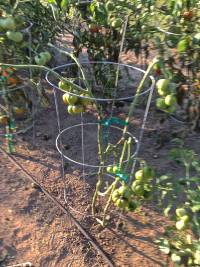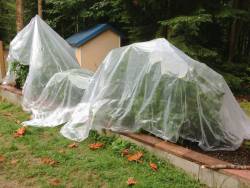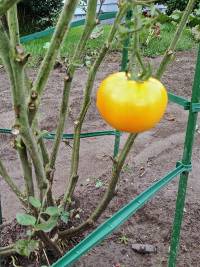Table of Contents
Late season tomato blight
I attended a webinar about late season blight. It is caused by a fungus that can affect both tomatoes and potatoes. The presenters at the webinar, all agricultural researchers, agreed on several statements:
- The several fungi active in the U.S. cannot survive cold winter weather unless they inhabit an over-wintering potato. As the potato sprouts it can release thousands of spores to infect the area.
- Once blight has begun there is no rescuing the crop - blight rules.
- A couple of fungicides can reduce blight but only if applied regularly before spores are present.
Factors
- Spores from specific fungi in the air (often over-winter with potatoes)
- Moisture on the leaves
- Fungal spores traveling on the wind from another blighted garden
Agricultural scientists who conducted a webinar I attended said that the most likely way for spread of the fungal spores is via over-wintering potatoes who had blight the previous season. I believe it is also possible for spores to travel on the breezes from one blight-stricken garden to another.
Managing
 Agriculture scientists say not much can be done after blight appears. However, if it is late enough and fruit is getting close to ripe enough to take inside, I do the following:
Agriculture scientists say not much can be done after blight appears. However, if it is late enough and fruit is getting close to ripe enough to take inside, I do the following:
- Never spray water directly on tomato leaves. In some situations it may help to protect plants with a cover.
- Trim off any leaf or non-essential stem (and put in yard waste, not a compost pile)
- Remove any fruit that has a blighted (dark gray to brown to black)
- Cross your fingers and hope for warm sunny weather
In our experience, once the blight gets to the trunk and stems of a tomato plant the game is over. Soon any fruit will be blighted also and even heroic efforts to save the fruit will have minimal effects. I have attempted heroic measures with very little success.
Nice try
 This wasn't a bad idea - it just didn't help. The extended cool and cloudy weather in late August took out all of the tomatoes with blight in a really ugly fashion.
This wasn't a bad idea - it just didn't help. The extended cool and cloudy weather in late August took out all of the tomatoes with blight in a really ugly fashion.

